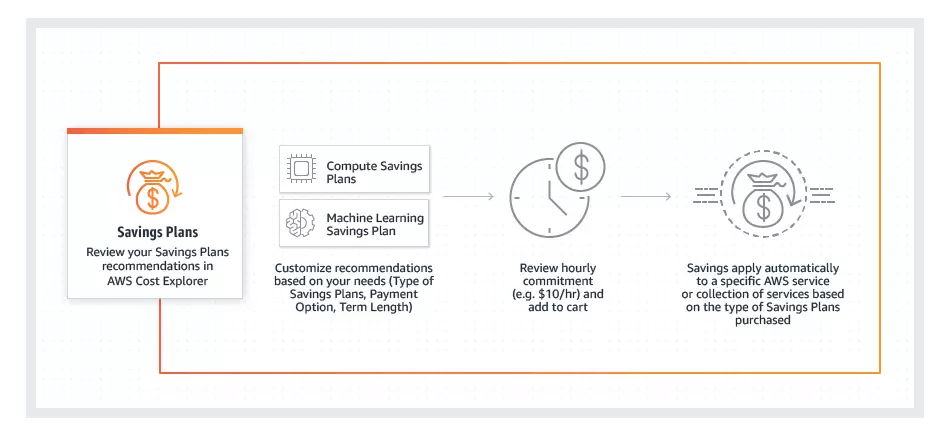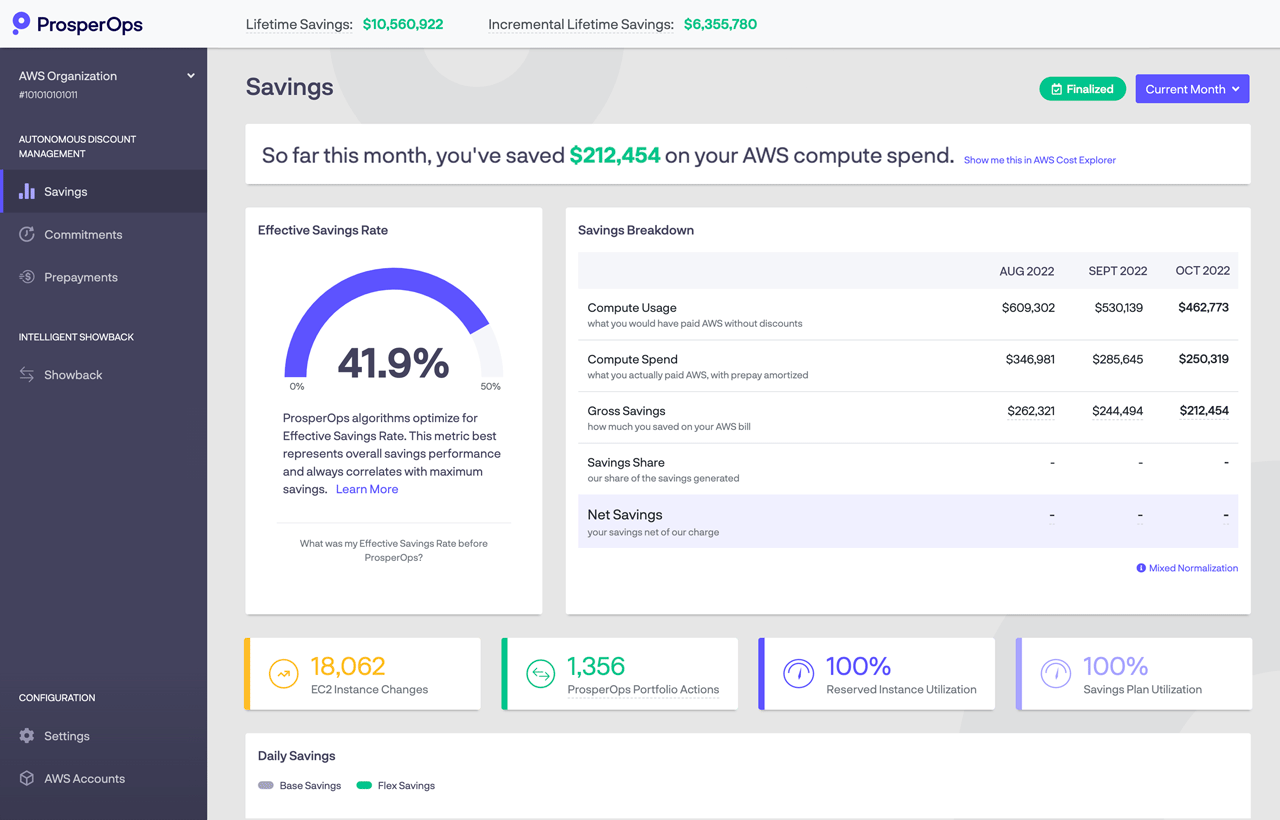When a company moves from an on-premises data center to the cloud, they expect changes to affect engineering decisions and functionality. After all, their whole way of building and supporting new products has changed.
What many companies don’t expect is that the switch to working with cloud providers also necessitates new budgeting and accounting practices.
Suddenly, supporting an on-site data center is no longer a capital expense; instead the company must pay operating expenses to cloud providers based on their usage, much like a monthly utility bill.
Some companies undergo a learning curve when it comes to finding better cloud service rates, while others never bother at all. Even businesses that never existed outside the cloud tend to just accept their monthly bills and assume there’s not much to be done to bring the total fees down.
SaaS startups, for example, often focus on improving their products and onboarding new customers, but spend less time finding ways to optimize their existing costs.
Optimizing cloud rates may not seem as impactful as making other sweeping changes to R&D or customer acquisition. But it can pay off much more than you’d expect.
If it’s starting to hurt every month when you get your cloud bill — or you have the sneaking suspicion that your bill is more bloated than it should be — it’s probably well past time to look for cloud cost optimization opportunities.
Even if you haven’t encountered these problems yet, you wouldn’t want to leave money on the table just because you didn’t know an opportunity existed or because it was a hassle to find it.
The problem is deciding how and where to get started with cloud rate optimization.
There is no one-size-fits-all approach, because the best opportunities for your business will depend on your unique situation. However, the following tips from Steven O’Dwyer of ProsperOps — one of the leading cloud rate optimization platforms for SaaS companies — should point you in the right direction.
What Is Cloud Rate Optimization, And How Can You Achieve It?
Cloud rate optimization is the process of finding discounts with the ultimate goal of paying as little as possible for cloud usage. Typically, this involves using both publicly available on-demand and privately available rates from cloud providers.
Think of public pricing as the sticker price listed on an item (e.g., MSRP), while private pricing is negotiated behind the scenes.
If a cloud provider has a specific rate published on its website that is a factor of usage, resource parameters, and regions, this is their public price. If you’re running an EC2 instance directly out of the AWS console with no discounts, you’re paying the public, on-demand price.
The benefit to paying on-demand prices is that they require no commitment or usage thresholds by the cloud provider.
Often, discounted rate options are available to the public, but are only offered in exchange for usage commitments for a set term. The downside to public pricing is that in exchange for this flexibility, customers will pay the highest possible price the provider charges.
Therefore, companies that pay only on-demand prices often miss out on steep discounts that would have been available if they’d pulled back the curtain.
What Are Some Of The Best Ways To Optimize Your Cloud Rates?
Remnant inventory/Spot discounts
Cloud providers design data centers to be able to handle steep peaks of customer demand without slowing down or disrupting service. This means there are often long periods between peaks where cloud data centers have resources that aren’t being used at full capacity.
Rather than let these resources go to waste, cloud providers are usually happy to rent out the extra resource capacity to companies at a discounted rate. AWS refers to these compute resources as ‘Spot Instances’ and they offer as much as 90% off of on-demand rates.
The drawback of this opportunity is that when demand does begin to peak — or when a customer comes along who is willing to pay the on-demand public price — your service will be stopped with minimal notice.
You wouldn’t want to run critical workloads that can’t be interrupted on Spot Instances, but this optimization opportunity is great for short-lived, batch, fault-tolerant, or flexible applications
Commitment-based discounts
Companies can find savings of up to 70% compared to on-demand pricing if they’re willing to commit to a long-term arrangement.
Commonly, commitments are for one or three years and include terms for the type of usage or an hourly spend commitment. Reserved instances and savings plans fall under this category.

Think of commitment-based discounts as a coupon for a specific time period. The client will be billed whether their usage matches the commitment or not, so it’s best to use this type of discount only if you’re confident it won’t go to waste.
It’s important to note that most providers incentivize upfront payments for commitments. The more you’re willing to pay up front, the better the discount you can find. Likewise, the longer the commitment is made for, the steeper the discount.
Tip: Learn more about the differences between AWS Reserved Instances and Savings Plans in this guide: “AWS Savings Plans Vs. Reserved Instances: When To Use Each”
Sustained usage discounts
This is a discount opportunity unique to Google Cloud Platform (GCP). Sustained usage discounts automatically apply to resources that are used for a predetermined length of time, with no commitment necessary. If the resource is stopped beyond the sustained usage threshold, the reduced rate simply stops as well.
GCP uses sustained usage discounts as a way to incentivize companies to “set it and forget it.”
In other words, they want you to set up your resources and then leave them running, so they’ll give you a discount to do so.
If you plan to do any engineering optimizations, this opportunity might not be a great fit. While it’s a passive, hands-off way to save money, it can also cause engineering teams to avoid instance scheduling and other optimization activities.
Private pricing discounts
As the competition between cloud providers grows, so does the challenge to land and retain customers. As a result, cloud providers offer private pricing agreements.
Some private agreements are service-specific and include usage commitments over a period of time. Others, for customers such as Start-up companies, require growth or increased usage within a particular service over a term. Still, others receive private pricing agreements with no such stipulations, receiving discounts from cloud providers in order to maintain their current services and levels of usage.
Often, private pricing discounts scale based on usage thresholds. Companies that use more resources can save more money, which makes this an attractive option for large and growing companies.
Where Should You Start?
Despite the cloud’s explosion in popularity, cloud adoption in the business world is still in a relatively early stage. Many businesses are still fighting the learning curve of how to harness the benefits and functionality of the cloud.
Fully understanding rate optimization opportunities is a lofty goal that requires a level of experience with the cloud that most companies don’t yet have.
You can optimize your rates manually
Companies always have the option of searching for and purchasing reserved instances or other savings plans on their own. They can contact individual cloud providers and negotiate for better rates whenever the mood strikes.
However, the do-it-yourself approach requires manpower and accurate reporting. It’s necessary to consistently monitor the company’s current cloud environment and match its needs to the deals available from providers.
If a company has the tools and internal reporting already in place, and if the cloud environment isn’t overly complex, manual cloud rate optimization can be cost-efficient.
For broad and complex cloud environments, opt for automated optimization
Autonomous rate optimization tools tend to save companies more money compared to the manual route. That’s because automated tools reduce the time and resources needed to manage optimization efforts, and they also act on favorable opportunities in real-time.
ProperOps, for example, constantly scans cloud compute environments for discount opportunities and implements them automatically. The financial optimizations occur in parallel with engineering changes or optimizations within the environment. Tools like this require little-to-no manpower to begin optimizing rates, lowering cloud bills and helping companies realize cloud economics.
 ProsperOps Savings Dashboard
ProsperOps Savings Dashboard
This means companies can seize great deals on rates at a moment’s notice.
Autonomous rate optimization is a relatively effortless way to maximize savings without needing a whole team dedicated to staying on top of optimization.
Note: With CloudZero’s integration with ProsperOps, your AWS compute Reserved Instances and Savings Plan portfolio is optimized automatically using advanced techniques to deliver industry-leading savings, which radically reduces financial lock-in versus standalone AWS RI’s or Savings Plans. Read more here.
CloudZero Can Help You Optimize Cloud Costs Far Beyond Just Finding Better Rates
Once you’ve negotiated the best rate for your situation, another optimization opportunity becomes available.
What if you could optimize the way you run your business — from the customers you choose to target to the way your engineers build products — to be as cost-efficient as possible?
With CloudZero, you can. Our cloud cost intelligence platform allows you to track the fine details of your costs and drill down to refine your COGS and other unit economics calculations — like cost per customer, per user, per product, or per new feature release.
Track any metrics you want, and use them to make your cloud infrastructure more cost-efficient.









